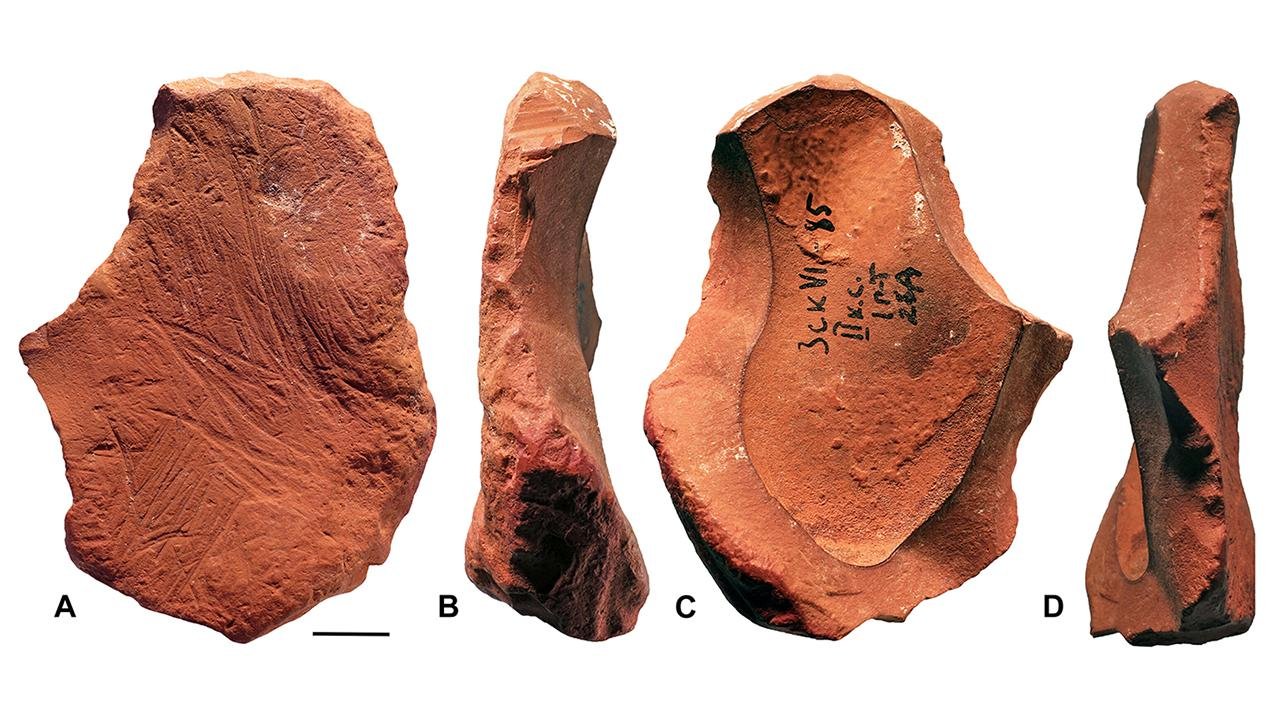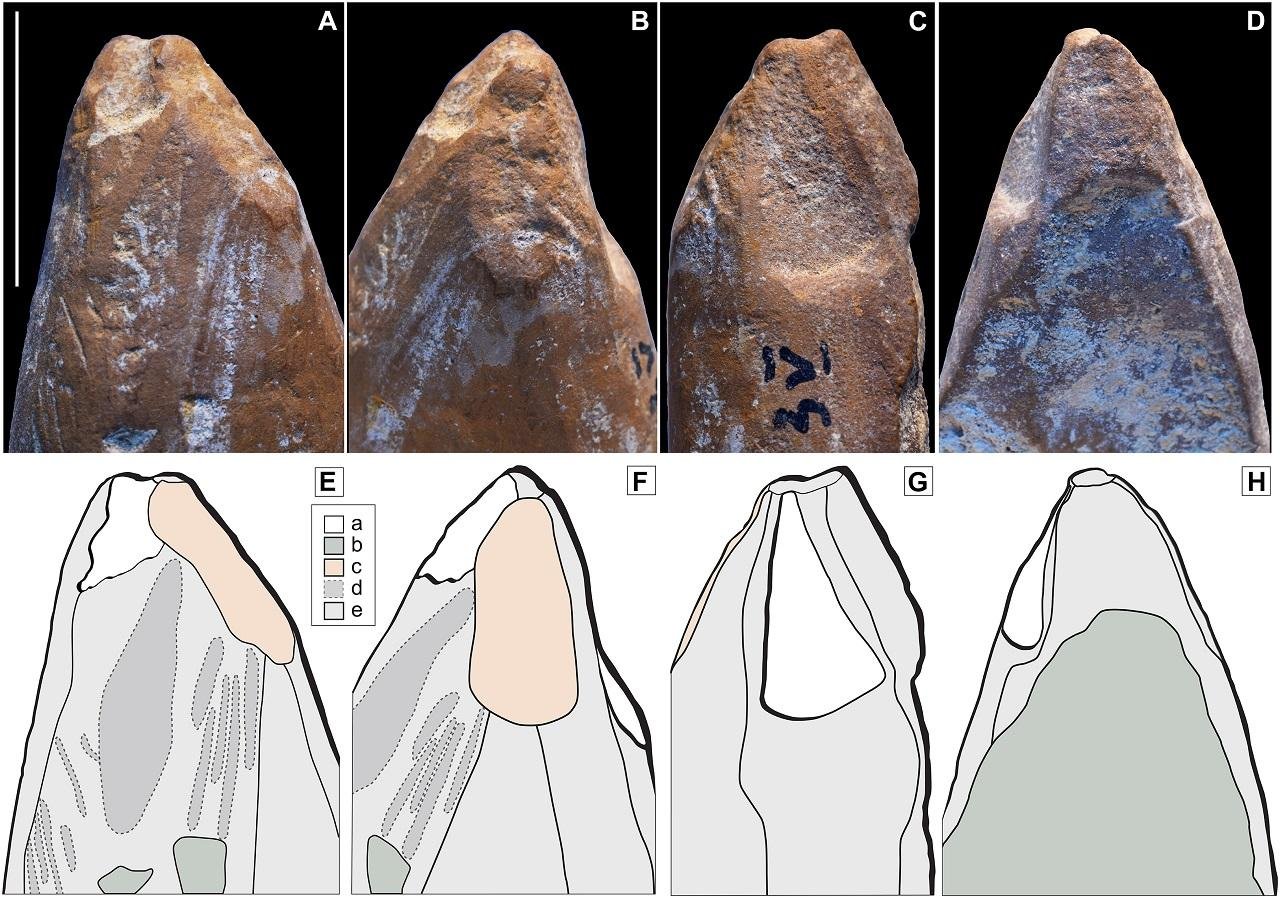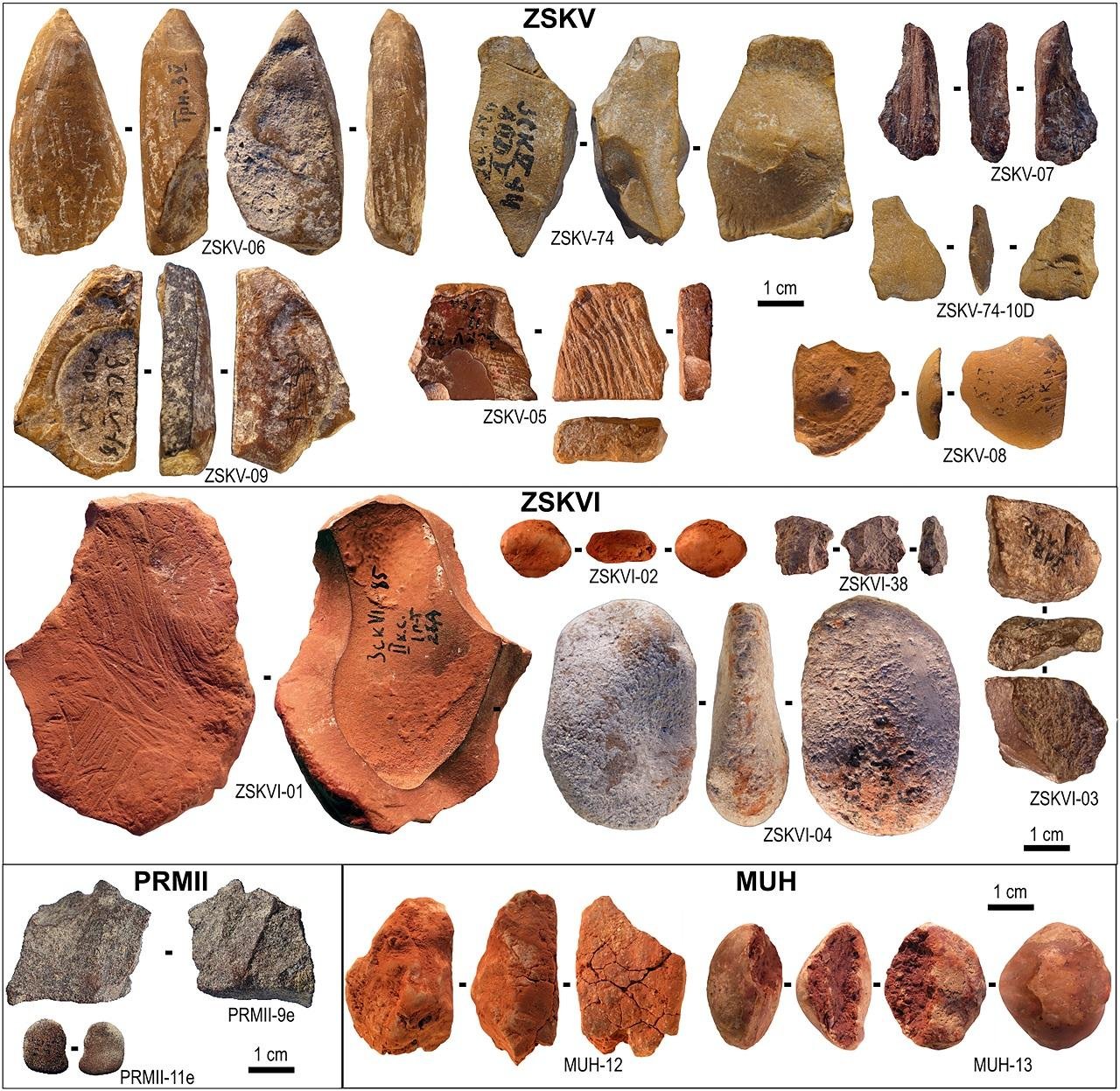New evidence of ochre use by Neanderthals from Crimea and Ukraine indicates that these substances were used not only for practical purposes but also for symbolic or artistic activities. In a study published in Science Advances, 16 ochre fragments from Middle Paleolithic sites of up to 70,000 years old were analyzed, showing that some of the pieces had been deliberately shaped, ground, and engraved, evidencing their use as marking tools.
 Modified ochre fragment (ZSKVI-01). Four views of ochre fragment ZSKVI-01 displaying multiple modifications. Credit: d’Errico et al., Science Advances (2025); CC BY 4.0
Modified ochre fragment (ZSKVI-01). Four views of ochre fragment ZSKVI-01 displaying multiple modifications. Credit: d’Errico et al., Science Advances (2025); CC BY 4.0
Ochre is an iron-rich mineral pigment used throughout prehistory for coloring, decoration, and tanning hides, while its symbolic use by Neanderthals has not been clearly established. To investigate this, Francesco d’Errico of the University of Bordeaux and his colleagues examined ochre fragments from the sites of Zaskalnaya V, Zaskalnaya VI, Prolom II, and Mukhovets—all known to have been occupied by Neanderthals. Using portable X-ray fluorescence and scanning electron microscopy, they studied the composition, texture, and microscopic wear on each fragment.
Their results indicated intentional modifications such as grinding, scoring, flaking, and scraping. Three pieces stood out from the rest in that they appeared to go beyond utilitarian use. One yellow ochre fragment, approximately 4.5 centimeters long, had been deliberately shaped into a crayon-like tool with a pointed end. Microscopic traces showed that it had been repeatedly resharpened and displayed signs of pressure wear, suggesting that it had served to draw or mark surfaces.
Another fragment of red ochre seemed to have come from a larger crayon-shaped piece, while a third flat piece, orange in color, showed polished surfaces and engraved grooves, indicating deliberate design. These findings indicate that Neanderthals not only created but also reused ochre tools for symbolic purposes, rather than just functional tasks.
 Tip of an ochre “crayon.” Credit: d’Errico et al., Science Advances (2025); CC BY 4.0
Tip of an ochre “crayon.” Credit: d’Errico et al., Science Advances (2025); CC BY 4.0
While there is little doubt that some fragments were used in hide processing or other daily activities, the distinctive shaping and wear patterns on each of these three objects imply active marking behavior. The team concluded that these pieces were curated and maintained, reflecting planning and cultural investment. Such actions indicate that these markings might have played a role in communication, in the expression of idenтιтy, or in the transmission of knowledge within groups.
This find challenges the long-held view that symbolic behavior was exclusive to Homo sapiens. The fact that ochre crayons were deliberately shaped and repeatedly used by Neanderthals demonstrates complex cognition and contributes to a growing record of Neanderthal artistic capacity, as revealed by engraved cave motifs and hand stencils attributed to them in Europe.
 Archaeological ochre pieces from Crimea. Credit: d’Errico et al., Science Advances (2025); CC BY 4.0
Archaeological ochre pieces from Crimea. Credit: d’Errico et al., Science Advances (2025); CC BY 4.0
The authors of the study stress that although ochre had many possible uses, some of the materials examined clearly served symbolic purposes. These ochre “crayons” illustrate that Neanderthals were capable of abstract thinking, planning, and perhaps even the creation of visual symbols, traits previously thought only possible for modern humans.
More information: d’Errico, F., Mauran, G., Pitarch Martí, A., Majkić, A., & Stepanchuk, V. (2025). Evidence for symbolic use of ochre by Micoquian Neanderthals in Crimea. Science Advances, 11(44). doi:10.1126/sciadv.adx4722





